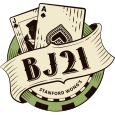Again I will omit my sim output, to avoid the flack from some software authors.
I will just discuss hit/stand indexes also.
I composed decks until I got into compositions where the compostion prediction would go past the recomendation to stand, to where still higher counts recomended hitting. I used this to set a boundary to the confidence that the hole card prediction has to be. That is what I did for ten hole card predictions, with similar for the non ten predictions. Wong did this for Winning Without Counting, but for more normal decks. Then I used this count to estimate a linear range of how the hole card prediction raises or lowers the index.
The objection raised by ETF is one that is entirely bogus. Any prediction accuracy above or below 4/13, for predicting a ten, containes useful information. If below you are actually getting a non-ten prediction. This was addressed long ago in regard to Warps, when a player back in 1982 pointed out that warp bends are reversed when a dealer would peak by bubbling the cards, rather than lifting themm from the rear. 4/13 is the null prediction for tens. Indexes move still at that range because of the difference between a one card estimate and a composition estimate.
And the math is very much that used in QM. Notice how with higher hole card prediction accuracys you move to essentially - and + infinity counting indexes, because of the hole card info. That is known in QM as renormalization.










